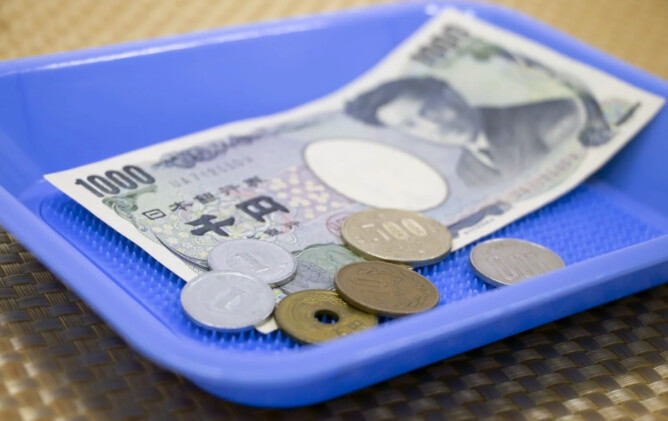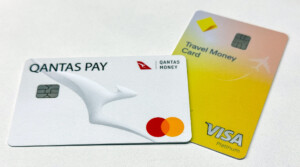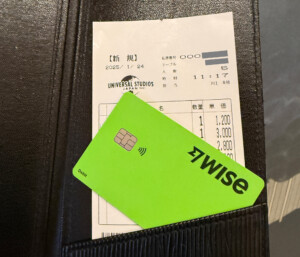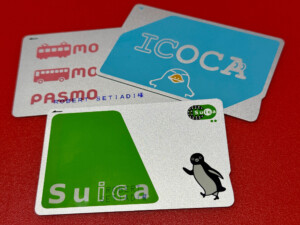
When in Japan, can we pay for everything with card or should we pay with cash? This is a common question asked by so many people in various Japan tourism groups in social media. A decade ago people would say that cash is king in Japan. Is it still the case today? This article is written to help first time visitors to understand and plan payment methods during their holiday.
In 2025, more and more businesses in Japan accept card payment. However, some shops and restaurants are still cash-only, especially when we are getting further from city centres or tourism hotspots. In reality, best payment method for Japan holiday in 2025 is a combination of few.
Credit/Debit Card
Visa and Master credit or debit cards are widely accepted in Japan, especially in the big cities and tourism places. If you have a credit/debit card in your home country, chances are it will work as a widely-accepted method of payment in Japan, with some exceptions.
Some banks and card issuers block transactions outside your home country by default. Always a good idea to check with your card issuer before your holiday. Some actually allow you to change the lock setting from their official app, some others require you to make a phone call or visit a branch.

To use it as payment in Japan, you card needs to support touchless/tap or PIN. The funny part is that some merchants have machine that supports tap payment, but refuse to allow customers to use tap. They insist on us putting in the card into the chip reader and enter PIN. Note that for some larger transactions (usually 10,000 yen or more) chip-and-PIN are usually required anyway.
Apple Pay and Google Pay are usually accepted at places that do tap-and-go payments. If unsure, this phrase “touch wa ii desu ka?” (is touch ok?) at the cashier usually helps.
I have not seen a single merchant allowing card payment using signature during my trip in early 2025. This makes sense, considering that payment with signature is rather ancient, it was discontinued here in Australia a decade ago.
Depending on your bank/issuer, you might also be able to withdraw cash in ATMs. You will need physical card for ATM, using your digital card is not an option. When your credit card provider says that there is no fee from withdrawing cast at ATM, you need to make sure which fee they are referring to. There are some possible fees associated with cash withdrawal at the ATMs:
- Fee for using your card at overseas location.
- Fee of converting your home currency to JPY, if your card is not linked to a JPY account.
- Fee for cash withdrawal.
- Overseas ATM fee charged by your bank or card issuer.
- ATM fee charged by the Japanese ATM.
Is there a shop that accepts only credit card and not debit card? The vast majority of businesses that accept credit card usually also accept debit card. There are a few exceptions, usually businesses that require age verification, including but not limited to payment for car rentals.
If a shop in Japan if I want to use my card to pay in JPY or in my home currency, which one is better? This is basically asking if you want them to do the currency conversion or you want your bank to do so. Unless you are with a really bad bank, choosing to pay in JPY (and letting your bank to use its currency exchange rate) is going to be cheaper in the end.
Cash
As mentioned above, there are still some restaurants, shops or other businesses that require cash-only payment in Japan. This is more common in places outside city centres and tourist attractions, but it does not mean that every place near tourism hotspots accept credit/debit card payment.
Paying with JPY cash has benefits and problems. For the benefits, it is accepted (almost) everywhere in Japan. I have not seen any place in Japan that do not accept cash, but I still put “almost” in my sentence because there could be places that I do not know that do not accept cash. Bringing JPY cash for your entire holiday payment is actually the simplest way because you do not need to worry about fees and cash-only places. You are also able to buy paper tickets for trains using the ticket machines at the station. Many buses also accept cash payment.
The limitation of cash is that it requires some management. Every time we need to pay, we need to think if we should break the next big note, or should we use the small notes and coins we already accumulate. Japanese coins can quickly pile up in our wallet during a few weeks holiday, this is a common problem experienced by many tourists.
Some vending machines and laundry machines only accept cash. Annoyingly, some machines only accept old design of certain denominations while some others only take new design. I had personally experienced issues with 1000 yen notes and 500 yen coins.
Non JPY cash (cash from any other currency) are not accepted in vast majority of businesses in Japan. You cannot expect to just use your dollar money there. Luckily, money exchanger are widely available, especially near popular tourist attractions or even in some convenience stores.
What is the best way to obtain JPY cash? Should I exchange in my home country or in Japan? It depends on where you live. If you know a money exchanger in your home city that does good exchange rates and no fee, chances are it is going to be a better choice compared to exchanging money in Japan. Being at the airport or near hotel do not guarantee good or bad exchange rates for a money changer in Japan. An alternative of getting JPY cash is from ATM withdrawal. This could be beneficial depending on your card, exchange rates and associated fees.
Prepaid Travel Card
When you use a normal credit/debit card from your home country to pay for something in Japan, chances are the card will convert the transaction to your home currency using its exchange rates. Some cards will charge transaction fee on top of that, some others would basically include the fee hidden as part of the exchange rates, either way we will pay something that becomes profit for the bank or card issuer. If you want to avoid this conversion, technically you might be able to open a bank account in JPY and link it to a debit card. While this could be beneficial, this might seem unnecessary for most people unless they go to Japan regularly.
Another issue with credit/debit card payment is that we are at the mercy of conversion rate at the time of payment. For example, someone in Australia might plan a holiday in Japan since mid 2024 when 1 AUD was 105 JPY. This person plans the itinerary, where to go and what to buy, then plan how much money s/he needs to allocate for the holiday. The holiday itself happens in April 2025 when 1 AUD is 92 JPY. Any payment happening in April 2025 would cost significantly more compared to the original “budget” of this person.
A way to get your JPY at the time when we are happy with the exchange rate is by using prepaid travel card. With this product, we usually can specify multiple virtual wallets of a few different currencies. The person in the above example could have exchanged his AUD to JPY in mid 2024 when the exchange rate was a lot better, and s/he could enjoy Japan holiday in April 2025 with the money he already allocated and exchanged to JPY.
Factors we need to consider in choosing a prepaid travel card:
- Does it allow to create wallet of a currency that we need?
- Does it offer physical card?
- Is there a monthly fee?
- Is there a transaction fee?
- Is there a conversion fee?
- Is there a fee to add fund from our bank?
- Is there a fee to send money?
- Is there a withdrawal fee when going to ATM in home country?
- Is there a withdrawal fee when going to overseas ATM?
- How good/bad is the exchange rates?
- Is it compatible with Apple Pay or Google Pay?
- Does it offer mobile app with real time transaction history?
- How long does it take for new fund to arrive and converted to desired currency?
There could be some other fees such as initial fee to open our account or to issue a physical fee. But I generally do not worry too much about some one-off fees. We need to pay more attention to the recurring fees that we will need to pay as I use the card regularly.
I have personal experience using 3 prepaid travel cards: Qantas Travel Money (now becomes Qantas Pay), CBA Travel Money Card, and Wise. The first two are likely Australian-only cards, but you should be able to find something similar in your country.

Qantas Pay card offers $0 monthly account fee, $0 transaction fee and $0 conversion fee. However, the exchange rates during the time of my personal use is not the best and I realised I essentially paid conversion fee, just in a different form because it is included in the exchange rates. There is no fee to add fund and to send money. We can add multiple wallets in AUD and 10 foreign currencies: USD, EUR, GBP, CAD, JPY, HKD, SGD, NZD, THB and AED. This card charges ATM withdrawal fee for overseas ATMs (outside Australia). My main issue with Qantas Pay is that new fund can take a while to arrive and settle, and the transaction history from Qantas Money app is not updated real time.
CBA Travel Money Card offers $0 monthly account fee, $0 international transaction fee and $0 funds transfer fee to a different currency. It supports AUD, USD, EUR, GBP, CAD, JPY, HKD, SGD, NZD, THB, AED, CNY, IDR, INR, VND and FJD. Commonwealth Bank of Australia has a really good app with reliable real-time transaction history, something I appreciate highly. Sadly, its conversion rate is bad in my experience. It was so bad that it ended up more expensive than other cards that charges non-zero conversion fee.
Wise multi-currency card is a very popular travel card for tourists visiting Japan. Wise is available in most countries, offering no monthly fee and $0 fee in adding fund to my home currency balance (AUD). There is a small fee for currency conversion, but Wise’s exchange rate is good to the point that to get the same amount of JPY I still end up paying less with Wise compared to CBA Travel Money Card that does not charge fee. Of course exchange rates is something that changes dynamically, but the above was my personal experience comparing them in early 2025.

Opening a Wise account gives us access to Wise app. It looks polished and transactions are updated reliably in real time. The exchange rates of Wise is updated in real time. Transactions a few minutes after another could have different exchange rates.
We can also set up auto conversion, meaning we can set up to convert currency A to currency B when the exchange rate hits certain value that we specify or better. This feature is super handy as I actually had my AUD converted to JPY at the rate that I was happy with during Australia’s night time when I was asleep. It saves us the trouble from checking exchange rates throughout the day and doing the conversion when it hits certain point. I love the fact that I could convert to JPY when I like the rate, not when my purchase happens.
By default, opening Wise account will give us digital card. Requesting physical card costs $10 (AUD) in Australia. The Wise card I use is actually a Visa card, but I believe people in different countries could have Wise-issued Master card. Note that people who live in the US does not seem to be able to request new physical Wise card (existing customers can still use their physical cards) due to a regulation issue. Getting a physical card is strongly recommended if we plan to withdraw JPY cash in Japan. The first 2 withdrawals up to the value equivalent of 350 AUD per month does not incur fee from Wise (but you might still need to pay fee from the ATM). Another reason to get physical card is because many shops in Japan would insist on inserting the physical card into the chip reader (they do not want tap payment even though their machine can).
Using Wise, I was able to pay for shinkansen booking via SmartEX app and Tokyo Disneyland tickets via Tokyo Disney Resort app without any issue. I also used it to pay for most purchases in Japan. I even received a refund on my Wise card when I cancelled a Limited Express train reservation. So far my experience with Wise has been quite smooth. A “bonus” benefit is that having prepaid wallet helps to keep track of spending while in holiday, at least for me.
Is Wise a perfect travel card? Possibly no. There could be a better product that I have not tried, or maybe even have not heard of. But for the purpose of having a reliable payment card during Japan holiday, I have no complain and would happily recommend it.
Suica (or other IC card)

Suica (or other IC cards such as Pasmo, Icoca, Toica, etc) is essentially a prepaid transport card, it has balance in JPY, the balance is deducted every time we use it for train/bus rides, then we need to top up to make sure the card has sufficient balance for our trips. Digital Suica is topped up from the phone, using Apple Pay. Physical Suica is topped up at the machines in train stations, or from manned ticket office.
Different from credit/debit card or prepaid travel card, Suica is not intended to be our main payment method during holiday. It is primarily a transport card (trains, subways, buses), which coincidentally can also be used in some other shops and restaurants.
Outside train stations and buses, Suica is accepted in some convenience stores (konbini), some supermarkets, some vending machines, some chain restaurants (McDonalds, KFC, Dominos, Yoshinoya, Mos Burger, Burger King, etc) and even some electronic stores. However, the list of shops and restaurants that do not accept Suica is still a lot longer than the list of places that accept it. Therefore, it is not a suitable replacement of our main payment method. The main function of Suica to pay for train rides cannot be substituted with credit/debit cards, while konbini and McDonalds also accept credit/debit cards. You can read more about Suica and IC cards from my other post here.
My Recommendations
Even though using cash as main payment works for almost everything in Japan, I personally would like to avoid dealing with excess coins when I can. My usual strategy for a Japan holiday is to bring a combination of:
- JPY cash, around 30% of my spending budget (excluding accommodation and tickets already pre-purchased).
- Prepaid travel card (Wise is usually my choice) with JPY balance containing the remaining 70%.
- Suica for transport, the cash needed to top up Suica is included in my 30% cash.
- If somehow I encounter more need of cash than anticipated, I can always withdraw cash from an ATM using Wise.
Others
This post is one of five parts of Planning Japan Holiday series:
- Planning Japan Holiday 1: The Basics
- Planning Japan Holiday 2: Trains, Suica, Shinkansen and JR Pass
- Planning Japan Holiday 3: eSIM and Pocket Wi-Fi
- Planning Japan Holiday 4: Cash or Card?
- Planning Japan Holiday 5: Disney Resort and Universal Studios
Lastly, the information in this post are based on my knowledge at the time of writing. Things can change. This article is written to help first time visitors with a starting point to plan their trips. Always check with official sources for latest information when doing the actual planning.

Leave A Comment